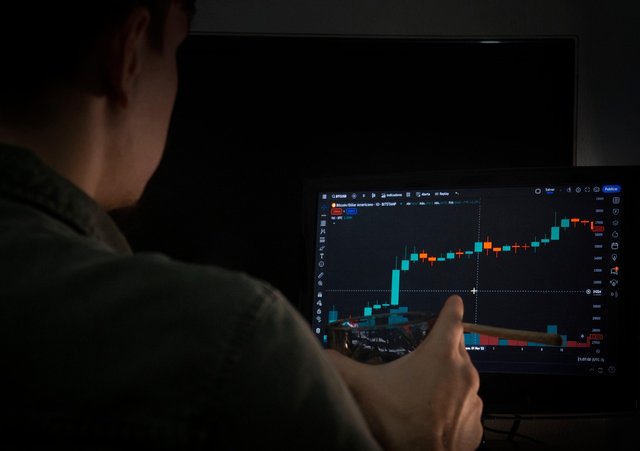Comparing Staking and Yield Farming: Which Offers Safer, More Sustainable Returns in 2025?
Staking and yield farming are considered to be two of the most popular passive income methods in the rapidly developing world of cryptocurrency. They both enable investors to get returns on their crypto assets rather than just holding them in their wallets. Nonetheless, the question arising to most investors in the crypto market in 2025 is which of the two has more sustainable returns and is safer to invest in over time. To know this, we must take a closer look at the way each of them works, what benefits they have, what threats they face, and how global innovation and regulation is defining their future.
The procedure of committing a specific sum of cryptocurrency in blockchain network to fund its activities is known as staking. In other words when you put your coins on the block you contribute to the smooth and safe operation of the network and you receive reward in the shape of additional coins. It is like putting money in a bank and getting the interest. This system is applied to cryptocurrencies such as Ethereum, Cardano, and Solana using what is referred to as proof-of-stake. The simplicity and stability of staking makes it attractive. Staking can be done right to the network or via exchanges that provide automatic staking rewards. Today, most exchanges can easily stake with only a few clicks, and in 2025, it will become beginner-friendly.
Staking, even with its benefits, has its risks. The largest is price volatility. Although you may have been rewarded, any fall in the market will make the values of your holdings to decrease. The other danger is that not all staking platforms allow you to withdraw your coins at any time; instead, they may have lock-up periods. In case the market will go down at that time, you will possibly incur losses. Nevertheless, staking is regarded as less risky than yield farming since it is more predictable and reliable, particularly long-term investors.
Instead, yield farming is more difficult but frequently more satisfying. It consists of lending or liquidity to decentralized finance (DeFi) venues. When placing your crypto into a liquidity pool, other users borrow or trade on the liquidity pool and you receive a portion of the fees. Yield farming can be extremely rewarding particularly when new projects are seeking to attract users with high interest rates. It is however also associated with increased risks. The token prices may decrease rapidly and there is this so-called impermanent loss where the prices of your tokens will be different than it was when you deposited them. Others even become scams or rug pulls, where developers just vanish and take away the money of investors.
By 2025, both staking and yield farming are more developed. Rules are now contributing significantly to their safety. Governments and financial regulators in various nations such as Nigeria are starting to set out the guidelines of crypto platform operations. This has served to defend the users against frauds and to make the ways of earning more transparent. Nevertheless, staking is more stable and sustainable, ensuring the security of the blockchain and moderate and consistent rewards. Yield farming is a lucrative activity but tends to rely on temporary benefits that can diminish with time.
As a Nigerian, I have observed that staking is gaining popularity among young crypto enthusiasts in need of a steady income but not that risky. Though alluring with high returns, yield farming can easily result in losses to newcomers who have not grasped the fundamentals of the method. Staking is more trusted by many Nigerians as it does not need any in-attention or tricky moves.
To compare the two, it depends on individual aspirations. Staking is evidently preferable to you were after a less risky and predictable source of income. It is easy, safe, and best suited to long-term crypto holders. However, when you are a seasoned trader who is capable of taking risk and desires to make as much money as possible, yield farming are fun and profitable, provided you understand what you are getting into. Investors today in 2025 combine simultaneously both strategies, placing the majority of their crypto in the safety category yet a smaller portion of their funds in the yield farming segment to see how much higher returns can be obtained.
To sum up, staking and yield farming are both worthwhile innovation that have altered the way individuals make money on crypto. But the issue of safety and sustainability is more relevant than ever in the world of unpredictable price fluctuations.
Staking offers more confidence and peace of mind due to its long-term nature, whereas yield farming offers more, but riskier opportunities. At a personal level, I think staking is the wiser option to most people particularly in such a place as Nigeria where you need to be financially stable. Perhaps the most important success criteria in crypto in this rapidly shifting digital economy is not to chase profit necessarily, but to know risk levels, remain steady, and create a safe and stable future.

https://x.com/adenijiadeshin7/status/1975074599676375367?t=-77Qklq2aYlCtBdpXT_FyA&s=19
https://coinmarketcap.com/currencies/pussfi/#Community
https://x.com/adenijiadeshin7/status/1938927121222561926?t=3w-kxv8wRaN6_Y3NxgX9lQ&s=19
Daily Puss Coin Activities
1 https://x.com/adenijiadeshin7/status/1938930904623206855?t=PIP1Mza5xwA-2pmIj48mcw&s=19
2 https://x.com/adenijiadeshin7/status/1938931045119746154?t=PIP1Mza5xwA-2pmIj48mcw&s=19
3 https://x.com/adenijiadeshin7/status/1938931164607107280?t=PIP1Mza5xwA-2pmIj48mcw&s=19
4 https://x.com/adenijiadeshin7/status/1938931284950106200?t=PIP1Mza5xwA-2pmIj48mcw&s=19
5 https://x.com/adenijiadeshin7/status/1938931399110648052?t=PIP1Mza5xwA-2pmIj48mcw&s=19
Note:- ✅
Regards,
@jueco